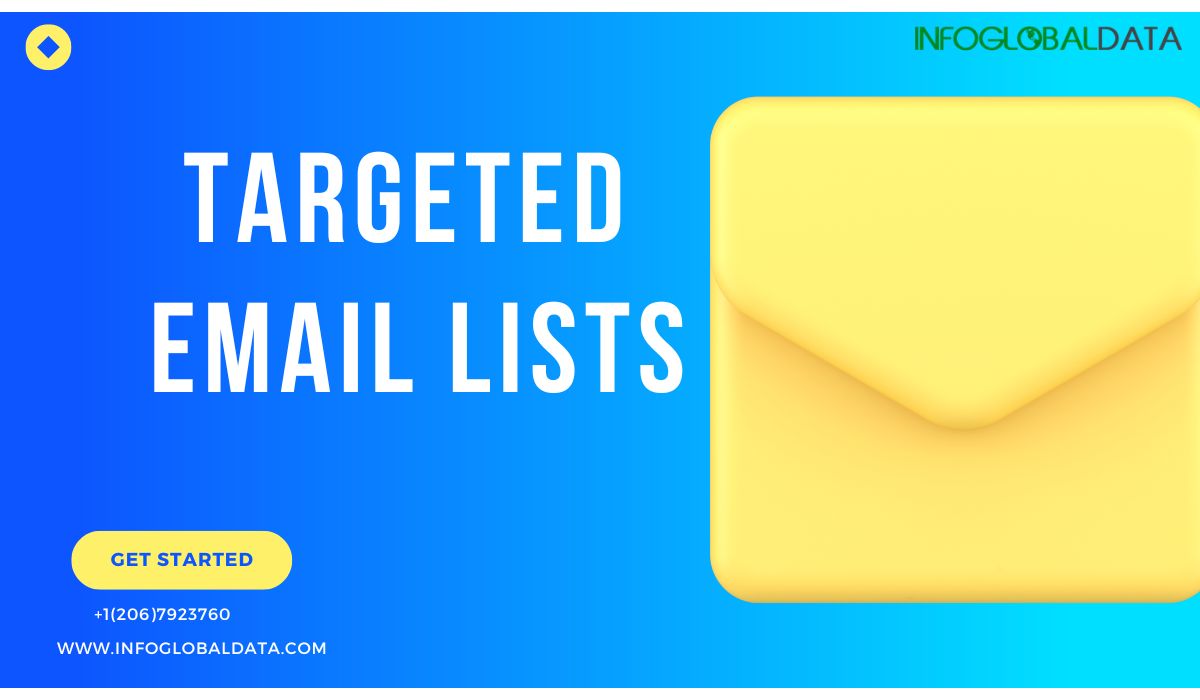Fostering customer loyalty is a crucial endeavor for businesses seeking long-term success and growth. One powerful tool at your disposal is personalized email marketing with targeted lists. One potent tool in your marketing arsenal is personalized email marketing with targeted email lists. We’ll explore how to effectively utilize this strategy to build strong and lasting relationships with your customers.
The Significance of Customer Loyalty
Customer loyalty forms the bedrock of a flourishing business. Loyal customers not only generate repeat purchases but also become advocates for your brand, attracting new customers through word-of-mouth recommendations. They are more likely to provide valuable feedback, increasing your business’s agility in adapting to market demands.
The Power of Personalized Email Marketing
Personalized email marketing involves tailoring your email content and messages to individual recipients based on their preferences, behaviors, and interactions with your brand. This approach goes beyond generic mass emails, creating a more meaningful and engaging experience for your customers.
Creating Targeted Lists
Before diving into personalized email marketing, you need to create targeted email lists. These lists segment your customers into specific groups based on shared characteristics or behaviors. Here’s how to get started:
- Understand Your Audience
To create effective email lists, you must have a deep understanding of your audience. Take into account factors such as demographics, buying history, online activity, and interaction level. This information will help you determine the most relevant segmentation criteria.
- Define Segmentation Criteria
Once you have a clear understanding of your audience, define segmentation criteria. Examples include:
- Demographics: Demographics encompass characteristics such as age, gender, location, and income level, among others.
- Purchase History: Frequency of purchases, total spend, last purchase date, etc.
- Engagement Level: Open and click-through rates, website visits, social media interactions, etc.
- Preferences: Product categories of interest, content preferences, etc.
- Segment Your Email List
Use your chosen segmentation criteria to divide your email list into distinct segments. For instance, you might create segments like “Frequent Shoppers,” “New Subscribers,” or “Abandoned Cart Users.” This step ensures that your emails are highly relevant to each group.
Crafting Personalized Email Content
With your targeted email lists in place, it’s time to craft personalized email content that resonates with each segment of your audience:
- Tailor Subject Lines
Personalization starts with the subject line. Address recipients by their first name or include personalized product recommendations based on their previous purchases. A compelling subject line encourages recipients to open your emails.
- Dynamic Content
Leverage dynamic content blocks within your emails. These blocks can display different product recommendations, images, or text based on the recipient’s behavior or preferences.
- Personalize Salutations
Begin your emails with a personalized salutation, addressing the recipient by name. This simple touch adds a human element to your communication.
- Recommend Relevant Products
If you have information about a recipient’s past purchases or browsing history, use it to suggest products they might be interested in. Personalized product recommendations boost engagement and conversion rates.
- Timing and Frequency
Consider the optimal timing for sending emails to each segment. For example, send abandoned cart reminders shortly after a cart is abandoned to increase the likelihood of recovery.
Building Customer Loyalty
Effective personalized email marketing doesn’t end with segmentation and content personalization. To build customer loyalty, you must also:
- Show Appreciation
Express gratitude to your customers for their loyalty. Consider sending exclusive offers, discounts, or early access to new products to reward their loyalty.
- Seek Feedback
Invite customers to share their thoughts and opinions. Use surveys or feedback forms to gather insights that can help you improve your products or services.
- Provide Value
Deliver valuable content that goes beyond sales pitches. Share informative articles, how-to guides, or industry insights related to your products or services. This positions your brand as a valuable resource.
- Maintain Consistency
Consistency in your email marketing efforts is essential. Stick to a regular sending schedule and ensure that your messaging aligns with your brand’s values and promises.
- Monitor and Adapt
Analyze the performance of your email campaigns. Pay attention to open rates, click-through rates, conversion rates, and customer feedback. Use this data to refine your email marketing strategy over time.
Conclusion
Building customer loyalty through personalized email marketing with targeted lists is a potent strategy for businesses of all sizes. By segmenting your audience, crafting personalized content, and focusing on providing value and appreciation, you can foster strong and lasting relationships with your customers. As a result, you’ll not only increase customer retention but also benefit from increased customer advocacy, which can drive new business growth through referrals and recommendations.



